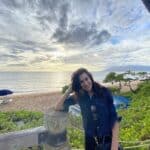Less familiar Italy: Apulia
As a travel planner specializing in Italy vacations (among other destinations), I am frequently asked for something “off the beaten track.”
That can have many different interpretations. For most, it is something simple: an area of a city where few tourists go. Or perhaps it is a small town on their way from one major city to the next.
But for those who really have seen and done it all in Italy, Apulia is a perfect choice. Where, you ask?
Apulia, or Puglia in Italian, is essentially the “heel of the boot,” that southeast peninsula that juts off mainland Europe into the Mediterranean. Historically, it is practically a country unto itself. In fact, it actually was until the end of the 19th century, when Italy was finally unified.
It has been occupied by Greeks, Romans, Byzantines, Muslims, Normans, Spaniards and French, and any combination thereof at any given time! They have all added their flavor to the cultural mix of this region, making it magically unique.
Is it touristy? Yes, and it is a big draw in the summer from other European countries, but it has yet to be fully discovered internationally.
Many groups come through, see a couple of the major sites, and then move on to other locations. Few focus entirely on Apulia or spend time here in depth. Yet, it has much to offer and is very diverse.
Apulia has several major highlights. One is the Castel del Monte, the castle built by the Holy Roman Emperor Frederick II in the early 13th century. This imposing octagonal stone building has almost become the “trademark” of the region. You can’t miss it. It is on every guide book and website for Apulia. Named a World Heritage Site in 1996, it is located near Andria in the central part of the peninsula. Historians are still debating its intended use. With no moat or other defensive features, it makes an unlikely fortress. Some say it was built as a hunting lodge, but there are no clear indications this was so either.
Moving farther south, you’ll find Alberobello, another must-see in the area. If you can only make one stop in Apulia, this is it. This is the home of the “trulli” houses, cone-shaped limestone buildings constructed without mortar.
houses, cone-shaped limestone buildings constructed without mortar.
This type of construction is considered to be prehistoric in design, but the present settlement dates from the 14th century. Some may claim this is a virtual tourist trap, but I beg to differ. The town, consisting almost entirely of trulli, is far too authentic and charming for that.
The shops are fun, the streets bright and cheerful with the light bouncing off the white walls, and the food is very “pugliese.”
Alberobello isn’t just “off the beaten track” in Italy; it is “off the beaten track” for just about anything!
Continuing on our southern path, we come to Ostuni. This is “La Citta Bianca,” the White City to the locals. It is located on top of a hill and, you guessed it, it is very, very white! All the buildings are white-washed limestone and just glisten in the sun.
Bring your sunglasses and be prepared to walk uphill as some of the streets are quite steep. Experts believe the site has been occupied since the Paleolithic era. From more recent periods, medieval gates and parts of the old walls are still intact. You will find narrow staircases, stone alleyways, arches and gorgeous sea views throughout the town. Just off the center of town is a little restaurant district tucked away for lunch or a leisurely drink.
Finally we come to Lecce. Now for something completely different…again! This city is called the “Florence of the South” or the “Baroque City.” Indeed, it is home to many lovely Baroque buildings.
Even though this has never been my “style,” one can certainly appreciate their elaborate facades and ornate interiors. More to my liking was the Greek amphitheater sitting right smack in the middle of the major piazza! Ha, the locals wanted to build a new insurance building there but, lo and behold, uncovered these fabulous ruins. So they excavated it and left it right there for everyone to see. In its heyday, it held 25,000 spectators. Pretty awesome. For shopping, this is a major urban area and you can find just about anything.
To name a few other worthy sites to visit, I would add Martina Franca, Locorotondo (both hill towns), and in the northern part of Puglia, Mont Sant’Angelo, a pilgrimage site where the Archangel Michael appeared in a cave. The cave is now part of the church built above it. Again, be prepared to walk up and down hills.
And if you are expecting to find the spiritual solitude of the cave, well guess again. It is usually packed with worshipers. Shimmy in sideways.
 I must also add a very important note to traveling in Apulia: the FOOD!!! This proves quite exceptional and a complete surprise.
I must also add a very important note to traveling in Apulia: the FOOD!!! This proves quite exceptional and a complete surprise.
Many years ago I had my first introduction to southern Italian cuisine. Or so I thought. Spicy, garlicky, with a liberal dash of pepperoncini, I associated this cooking style with the entire south.
However, I learned in Apulia that is the trademark only of Calabrese cuisine, that is, in Calabria, the “toe of the boot.”
Ha, in Apulia, it is quite the opposite. The emphasis is on fresh vegetables and many of them, grilled, roasted or even raw.
Orecchini, or little ears, is the traditional pasta of choice. You will find it everywhere and even drying on racks in the streets!
And the cheeses, wow! If you think you know mozzarella – yeah, that boring ol’ pizza cheese you find in every supermarket in the USA?—well, think again! Wait until you eat still warm right out of the hot water it has been soaking in.
Watch out for the wines. Some of them have an oh-so-slightly higher alcohol content than what we are accustomed to here in the USA, like about 14%. So plan your lunches accordingly.
I would love to help you plan vacation packages to this fabulous region of Italy.
There is something for everyone and you will go home feeling that you really did get “off the beaten path” and have had a thoroughly unique experience.




